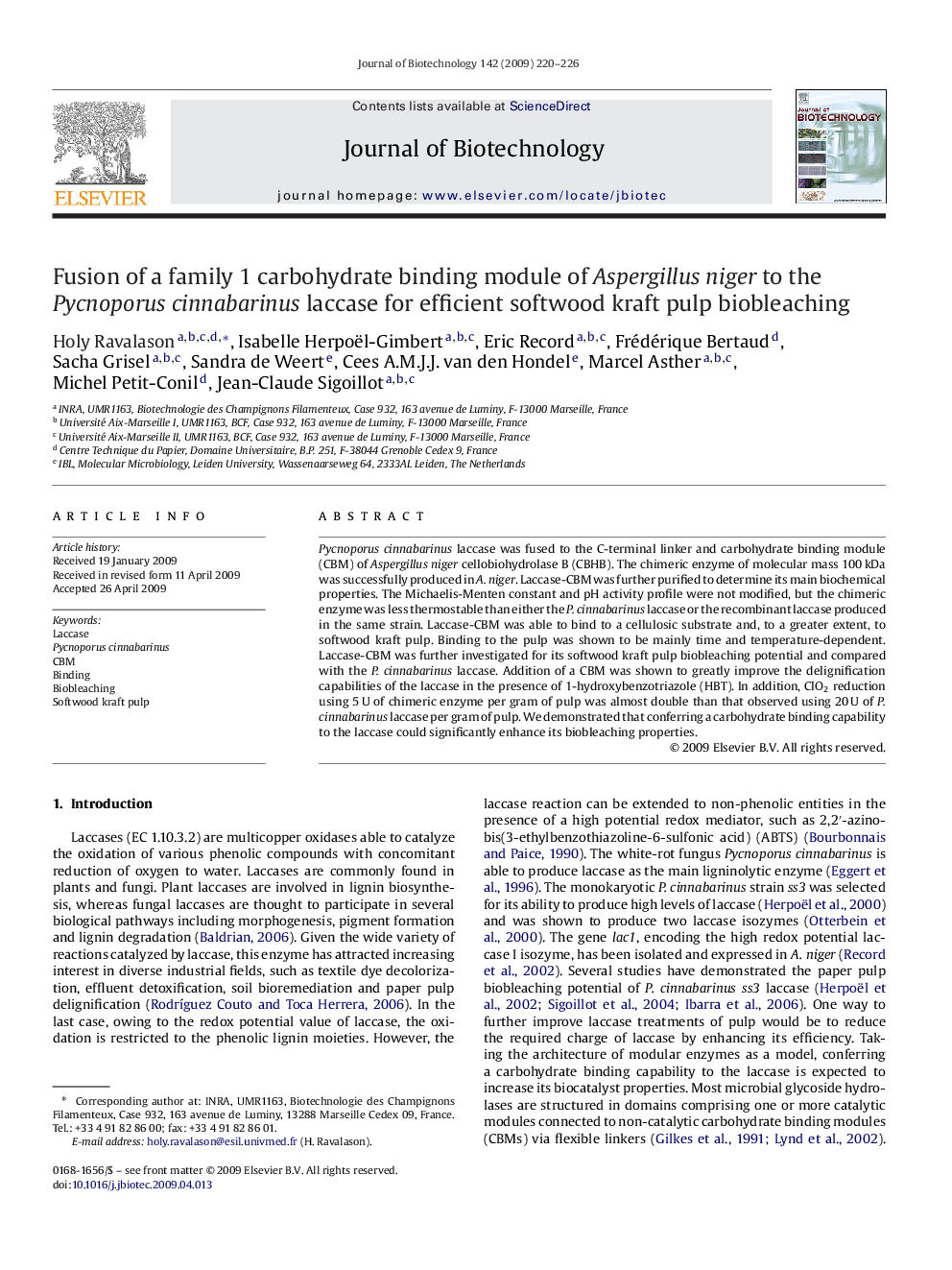| Article ID | Journal | Published Year | Pages | File Type |
|---|---|---|---|---|
| 24543 | Journal of Biotechnology | 2009 | 7 Pages |
Pycnoporus cinnabarinus laccase was fused to the C-terminal linker and carbohydrate binding module (CBM) of Aspergillus niger cellobiohydrolase B (CBHB). The chimeric enzyme of molecular mass 100 kDa was successfully produced in A. niger. Laccase-CBM was further purified to determine its main biochemical properties. The Michaelis-Menten constant and pH activity profile were not modified, but the chimeric enzyme was less thermostable than either the P. cinnabarinus laccase or the recombinant laccase produced in the same strain. Laccase-CBM was able to bind to a cellulosic substrate and, to a greater extent, to softwood kraft pulp. Binding to the pulp was shown to be mainly time and temperature-dependent. Laccase-CBM was further investigated for its softwood kraft pulp biobleaching potential and compared with the P. cinnabarinus laccase. Addition of a CBM was shown to greatly improve the delignification capabilities of the laccase in the presence of 1-hydroxybenzotriazole (HBT). In addition, ClO2 reduction using 5 U of chimeric enzyme per gram of pulp was almost double than that observed using 20 U of P. cinnabarinus laccase per gram of pulp. We demonstrated that conferring a carbohydrate binding capability to the laccase could significantly enhance its biobleaching properties.
